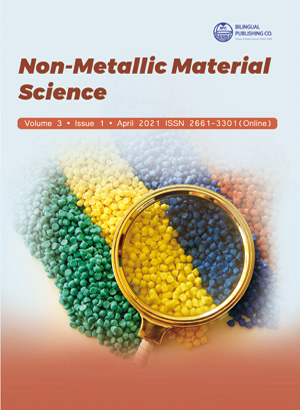-
920
-
908
-
876
-
506
-
392
Graph Theory and Matrix Approach (GTMA) Model for the Selection of the Femoral-Component of Total Knee Joint Replacement
DOI:
https://doi.org/10.30564/nmms.v3i1.3058Abstract
Total Knee Replacement (TKR) is the increasing trend now a day, in revision surgery which is associated with aseptic loosening, which is a challenging research for the TKR component. The selection of optimal material loosening can be controlled at some limits. This paper is going to consider the best material selected among a number of alternative materials for the femoral component (FC) by using Graph Theory. Here GTMA process used for optimization of material and a systematic technique introduced through sensitivity analysis to find out the more reliable result. Obtained ranking suggests the use of optimized material over the other existing material. By following GTMA Co_Cr-alloys (wrought-Co-Ni-CrMo) and Co_Cr-alloys (cast-able-Co-Cr-Mo)are on the 1st and 2nd position respectively.
Keywords:
Femoral component, Knee replacement, Graph theory and matrix approach, Sensitivity analysisReferences
[1] Edwards KL. Towards an improved development process for new hip prostheses. Mater Des 2008;29(2):558-61.
[2] Grujicic M et al. Design-optimization and material selection for a femoralfracture fixation-plate implant. Mater Des 2010;31(7):3463-73.
[3] Ibrahim A et al. Processing of porous Ti and Ti5Mn foams by spark plasma sintering. Mater Des 2010;32(1):146-53.
[4] Kurtz S et al. Projections of primary and revision hip and knee arthroplasty in the United States from 2005 to 2030. J Bone Joint Surg Ser A 2007;89(4):780-5.
[5] Jahan A et al. Material screening and choosing methods - a review. Mater Des 2010;31(2):696-705.
[6] El-Sheikh HF, MacDonald BJ, Hashmi MSJ. Material selection in the design of the femoral-component(FC) of cemented total hip replacement. J Mater Process Technol 2002;122(2-3):309-17.
[7] Fagan MJ, Lee AJC. Material selection in the design of the femoral-component(FC) of cemented total hip replacements. Clin Mater 1986;1:151-67.
[8] Prendergast PJ, Monaghan J, Taylor D. Materials selection in the artificial hip joint using finite element stress analysis. Clin Mater 1989;4:361-76.
[9] Farag MM. Materials selection for engineering design. New York: PrenticeHall; 1997.
[10] Quigley FP, Buggy M, Birkinshaw C. Selection of elastomeric materials for compliant-layered total hip arthroplasty. Proc Inst Mech Eng H: J Eng Med 2002;216(1):77-83.
[11] M. Marcus, H. Minc, Am. Math. Monthly 72 (1966) 571-591.
[12] W.B. Jurkat, H.J. Ryser, J. Algebra 3 (1966) 1-11.
[13] H.S. Nijenhuis, Wilf, Combinatorial Algorithms, Academic Press, New York, 1975
[14] S.J. Chen, C.L. Hwang, Fuzzy Multiple Attribute Decision MakingMethods and Applications. Lecture Notes in Economics and Mathematical Systems, Springer-Verlag, Berlin, 1992.
[15] Greiner C, Oppenheimer S, Dunand D. High strength, low stiffness, porous NiTi with superelastic properties. Acta Biomater 2005;1(6):705-16.
[16] Semlitsch MF et al. Joint replacement components made of hot-forged and surface-treated Ti-6Al-7Nb alloy. Biomaterials 1991;13(11):781-8.
[17] Matweb. Material property data; 2010. [cited 30.12.09].
[18] Dsc FRSFFIMRESCBE, Ceng MIMRJBP. Biomaterials. In: Modern physical metallurgy and materials engineering. 6th ed. Oxford: ButterworthHeinemann; 1999. p. 394-405.
[19] Ryhanen J et al. Biocompatibility of nickel-titanium shape memory metal and its corrosion behavior in human cell cultures. Mater Res 1997;35:451-7.
[20] Zhu S et al. Stress-strain behavior of porous NiTi alloys prepared by powders sintering. Mater Sci Eng A 2005;408(1-2):264-8.
[21] Black, J., 1999. Biological Performance of Materials: Fundamentals of Biocompatibility, 3rd ed. Marcel Dekker, Inc., New York.
[22] Spriano, S., Verne, E., Faga, M.G., Bugliosi, S., Maina, G., 2005. Surface treatment on an implant cobalt alloy for high biocompatibility and wear resistance. Wear 259, 919-925.
[23] Onate, J.I., Comin, M., Braceras, I., Garcia, A., Viviente, J.L., ˜ Brizuela, M., Garagorri, N., Peris, J.L., Alava, J.I., 2002. Wear reduction effect on ultra-high-molecular-weight polyethylene by application of hard coatings and ion implantation on cobalt chromium alloy, as measured in a knee wear simulation machine. Surf. Coat. Technol. 142-144, 1056- 1062.
[24] Sheeja, D., Tay, B.K., Lau, S.P., Nung, L.N., 2001. Tribological characterization of diamond-like carbon coatings on Co-Cr-Mo alloy for orthopaedic applications. Surf. Coat. Technol. 142-147, 410-416.
[25] Grądzka-Dahlke, M., Dąbrowski, J. R., & Dąbrowski, B. (2008). Modification of mechanical properties of sintered implant materials on the base of Co-CrMo alloy. Journal of materials processing technology, 204(1-3), 199-205.




 Amber Gul
Amber Gul





